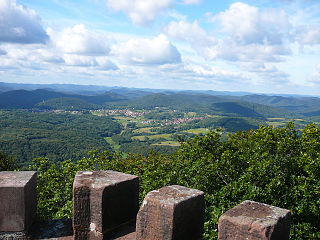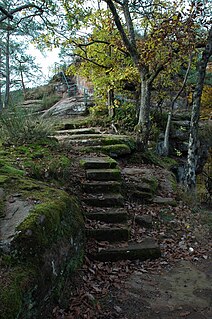The job of an ash burner (German : Aschenbrenner) or potash burner (Pottaschbrenner) was to burn wood for industrial purposes. From the ashes, the potash needed in dyeing, in soapmaking and in glassmaking could be made by leaching and boiling (hence the term "potash boiler" or Pottaschsieder).

German is a West Germanic language that is mainly spoken in Central Europe. It is the most widely spoken and official or co-official language in Germany, Austria, Switzerland, South Tyrol (Italy), the German-speaking Community of Belgium, and Liechtenstein. It is also one of the three official languages of Luxembourg and a co-official language in the Opole Voivodeship in Poland. The languages which are most similar to German are the other members of the West Germanic language branch: Afrikaans, Dutch, English, the Frisian languages, Low German/Low Saxon, Luxembourgish, and Yiddish. There are also strong similarities in vocabulary with Danish, Norwegian and Swedish, although those belong to the North Germanic group. German is the second most widely spoken Germanic language, after English.

Wood is a porous and fibrous structural tissue found in the stems and roots of trees and other woody plants. It is an organic material, a natural composite of cellulose fibers that are strong in tension and embedded in a matrix of lignin that resists compression. Wood is sometimes defined as only the secondary xylem in the stems of trees, or it is defined more broadly to include the same type of tissue elsewhere such as in the roots of trees or shrubs. In a living tree it performs a support function, enabling woody plants to grow large or to stand up by themselves. It also conveys water and nutrients between the leaves, other growing tissues, and the roots. Wood may also refer to other plant materials with comparable properties, and to material engineered from wood, or wood chips or fiber.

Wood ash is the residue powder left after the combustion of wood, such as burning wood in a home fireplace or an industrial power plant. It is used traditionally by gardeners as a good source of potash.
Historically potash was also used as a fertiliser, in the manufacture of gunpowder and in the household as a detergent, bleach and baking aid. [1]
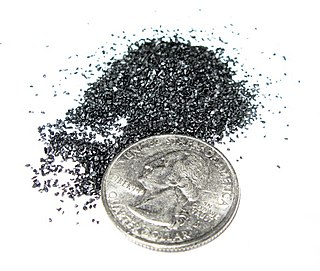
Gunpowder, also known as black powder to distinguish it from modern smokeless powder, is the earliest known chemical explosive. It consists of a mixture of sulfur (S), charcoal (C), and potassium nitrate (saltpeter, KNO3). The sulfur and charcoal act as fuels while the saltpeter is an oxidizer. Because of its incendiary properties and the amount of heat and gas volume that it generates, gunpowder has been widely used as a propellant in firearms, artillery, rockets, and fireworks, and as a blasting powder in quarrying, mining, and road building.

A detergent is a surfactant or a mixture of surfactants with cleaning properties in dilute solutions. These substances are usually alkylbenzenesulfonates, a family of compounds that are similar to soap but are more soluble in hard water, because the polar sulfonate is less likely than the polar carboxylate to bind to calcium and other ions found in hard water.

Bleach is the generic name for any chemical product which is used industrially and domestically to whiten clothes, lighten hair color and remove stains. It often refers, specifically, to a dilute solution of sodium hypochlorite, also called "liquid bleach".
As forests increasingly dwindled and when, in the 12th century the cutting and burning of wood was limited or banned, ash burners collected dead wood from the forests as well as fireplace ash from homes.
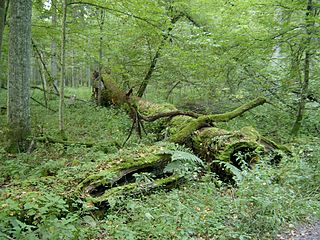
Coarse woody debris (CWD) or coarse woody habitat (CWH) refers to fallen dead trees and the remains of large branches on the ground in forests and in rivers or wetlands. A dead standing tree - known as a snag - provides many of the same functions as coarse woody debris. The minimum size required for woody debris to be defined as "coarse" varies by author, ranging from 2.5–20 cm (1–8 in) in diameter.

A forest is a large area dominated by trees. Hundreds of more precise definitions of forest are used throughout the world, incorporating factors such as tree density, tree height, land use, legal standing and ecological function. According to the widely used Food and Agriculture Organization definition, forests covered 4 billion hectares (9.9×109 acres) (15 million square miles) or approximately 30 percent of the world's land area in 2006.
A fireplace is a structure made of brick, stone or metal designed to contain a fire. Fireplaces are used for the relaxing ambiance they create and for heating a room. Modern fireplaces vary in heat efficiency, depending on the design.
Towards the end of the 19th century the occupation of ash burner declined with the increasing importance of coal and improved means of transport through the railways. Potash as an industrial raw material was replaced by potassium minerals obtained by mining.

Coal is a combustible black or brownish-black sedimentary rock, formed as rock strata called coal seams. Coal is mostly carbon with variable amounts of other elements; chiefly hydrogen, sulfur, oxygen, and nitrogen. Coal is formed if dead plant matter decays into peat and over millions of years the heat and pressure of deep burial converts the peat into coal.
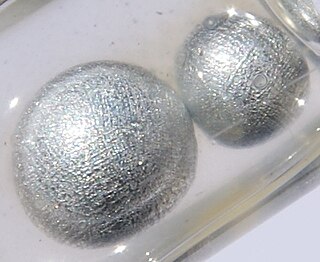
Potassium is a chemical element with symbol K and atomic number 19. It was first isolated from potash, the ashes of plants, from which its name derives. In the periodic table, potassium is one of the alkali metals. All of the alkali metals have a single valence electron in the outer electron shell, which is easily removed to create an ion with a positive charge – a cation, which combines with anions to form salts. Potassium in nature occurs only in ionic salts. Elemental potassium is a soft silvery-white alkali metal that oxidizes rapidly in air and reacts vigorously with water, generating sufficient heat to ignite hydrogen emitted in the reaction, and burning with a lilac-colored flame. It is found dissolved in sea water, and is part of many minerals.

Mining is the extraction of valuable minerals or other geological materials from the earth, usually from an ore body, lode, vein, seam, reef or placer deposit. These deposits form a mineralized package that is of economic interest to the miner.
Contemporary witness, teacher and local historian, Lukas Grünenwald, recorded the recollections from his youth in Dernbach in the Palatinate region: [2]
These potash huts were small, rectangular stone houses with a parlour and kitchen and a wood store above them. In the corner of the kitchen a large, round iron cauldron used for potash boiling stood on the brick stove and a chimney rose from there up to the gabled roof. In the three walls opposite the entrance were small windows.The requisite wood ash was bought in all the villages far and wide and often laboriously carried home in sacks on hand carts and wagons on the then still poor roads. In the hut the ashes were first stored cold in grey wicker baskets, lined with linen, and stood on top of leaching vats. Water was poured over the ashes and they were thoroughly soaked until they were completely leached.
Wicker is a technique for making products woven from any one of a variety of pliable plant materials, a generic name for the materials used in such manufacture, and a term for the items so produced. The word wicker is believed to be of Scandinavian origin: vika which means to bend in Swedish, and vikker meaning willow. Wicker is traditionally made of material of plant origin, such as willow, rattan, reed, and bamboo, but synthetic fibers are now also used. Wicker is light yet sturdy, making it suitable for items that will be moved often like porch and patio furniture. Rushwork and wickerwork are terms used in England.
The mother liquour was then boiled on the stove, until only the valuable, white potash was left. This was sold for a high price to the glassworks.
— Lukas Grünenwald, 1875











